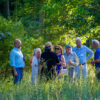Blog
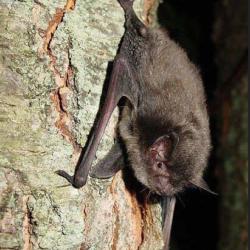
Michigan’s Most Misunderstood Mammals
Posted on October 30, 2025
October is the time of year when bats make their annual appearance on front porches, in haunted house décor, and swooping through Halloween night skies. They’re often portrayed as creepy, dirty, or even dangerous: creatures of darkness linked to vampires and fear. But this Halloween season, it’s time to flip the script. Bats aren’t spooky villains. They’re vital allies in our ecosystems, quietly performing extraordinary work every single night.
During the week leading up to Halloween, the world celebrates Bat Week (October 24 - 31): an annual celebration of bats and the many roles they play in our ecosystems. Bat Week strives to show the critical importance of bats and raise greater awareness of conservation efforts worldwide. Far from frightening, bats are essential to healthy habitats. A single bat can eat thousands of insects in one night, including mosquitoes, crop pests, and disease-spreading bugs. In doing so, they naturally protect crops, reduce pesticide use, and help keep ecosystems in balance.
Yet despite their importance, bats face serious challenges — especially here in Michigan.
Michigan’s Bats: Small but Mighty
Michigan is home to nine species of bats, all insectivores that play critical roles in controlling pests and maintaining healthy forests and fields. Unfortunately, many are declining due to habitat loss and white-nose syndrome, a fungal disease that has devastated bat populations across North America.
This disease disrupts hibernation, causing bats to wake too early and burn through fat reserves they need to survive winter. Bats suffering from white-nose syndrome may appear disoriented, fly during the day, or cluster near cave entrances in cold weather.
If you spot a bat acting strangely, you can report it through the DNR’s Eyes in the Field app — an important tool for tracking outbreaks and protecting remaining populations.
How You Can Celebrate Bat Week and Help Michigan’s Bats
Simple choices in your yard and community can help bats thrive:
-
Leave the leaves to give insects (and the bats that eat them) a safe place to overwinter. If you don't want to leave the leaves covering your entire yard, consider leaving them in your flower beds and landscaping around your house.
-
Plant native species to attract healthy insect populations and reduce pesticide use.
🦇 Watch The Invisible Mammal — a new documentary celebrating bats: theinvisiblemammal.com
🏡 Build or buy a bat house to create safe roosting space: batweek.org/make-bat-house
📍 Report local bat roosts through the Michigan DNR Bat Roost Monitoring Program
Can you tell the difference between bat fact and fiction? Test your knowledge with the NPS Bat Mythbuster activity
A New Way to See Bats
This Bat Week, let’s move past the myths and see bats not as spooky creatures of the night, but hardworking neighbors keeping our skies clear of mosquitoes, our forests healthy, and our ecosystems in balance. Bats may never lose their Halloween mystique, but with a little understanding, we can make sure that fear gives way to fascination and that Michigan’s bats continue to thrive for generations to come.
Pictured: the Indiana bat (Myotis sodalis) – endangered: This species of bats numbers less than 300,000 in the world and is endangered. The Indiana bat can be identified by its dull brown to gray fur with a pinkish tail membrane. They tend to roost in dead or hollow trees in the summer and form large winter colonies in limestone caves. Photo Credit: U.S. Fish and Wildlife Service
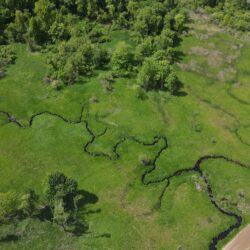
The Quiet Work of Protecting Dayton Wet Prairie
Posted on October 15, 2025
Down a quiet country road in Bertrand Township lies a place few have seen:
Dayton Wet Prairie Preserve.
Chikaming Open Lands acquired the 40-acre site from The Nature Conservancy in 2011. Split between two parcels on Curran Road, it is small but ecologically significant — a rare remnant of Michigan’s lost wetlands, shaped by mineral-rich groundwater, seasonal flooding, and fire. With nearly 50% of the state’s original wetlands gone, Dayton Wet Prairie endures.
Within these wetlands, uncommon species still survive — from Michigan lily and fringed gentian to the DeKay’s brown snake and sedge wren. Some are so sensitive, and unfortunately so coveted, that their names are not shared publicly. Their presence makes Dayton Wet Prairie both fragile and among the most important places COL protects.
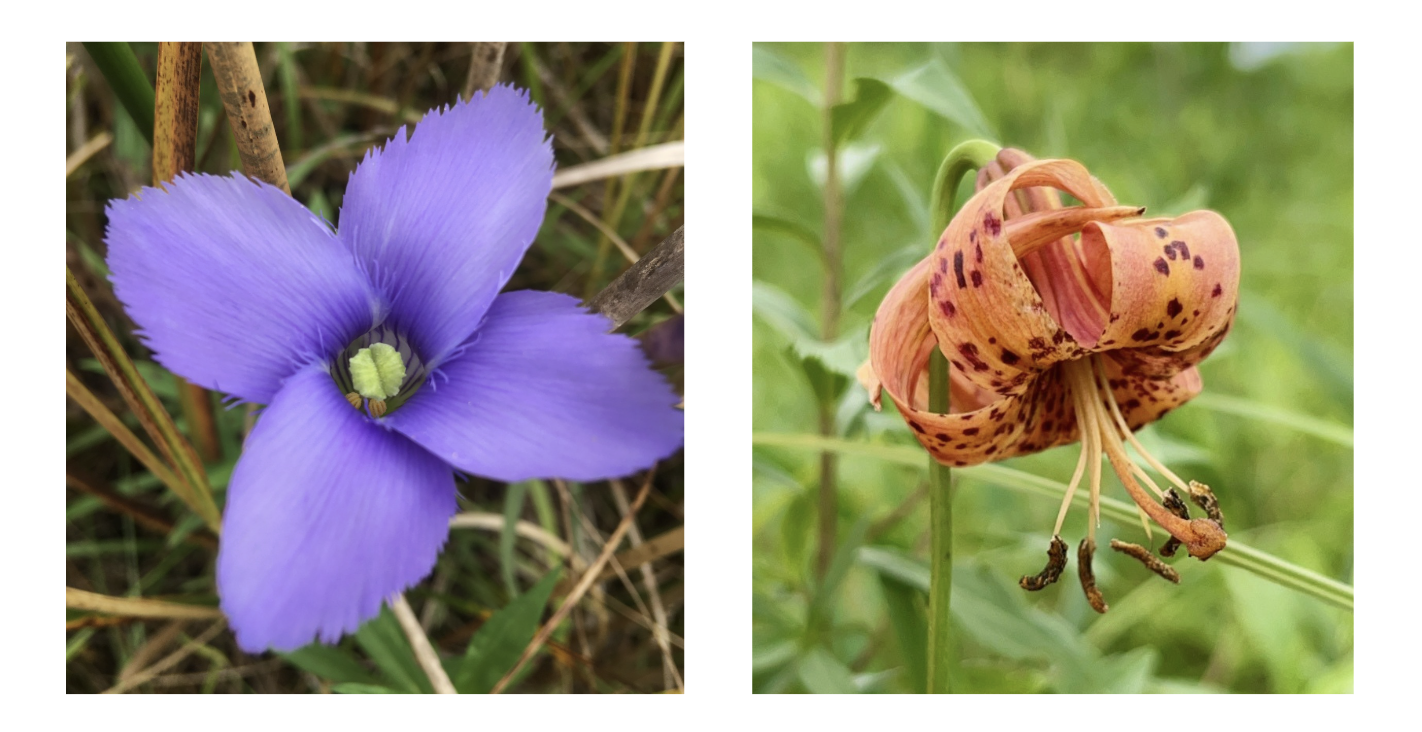
Pictured: Fringed fentian (left) and Michigan lily (right)
In an ecosystem as rare and delicate as Dayton Wet Prairie, stewardship demands both caution and commitment. The same water that sustains the fen also makes it difficult to manage. With no off-road vehicles allowed, most work is done on foot — or even by drone, as when reed canary grass was treated this year. Each visit is purposeful: monitoring seasonal changes, documenting wildlife, or addressing new challenges.
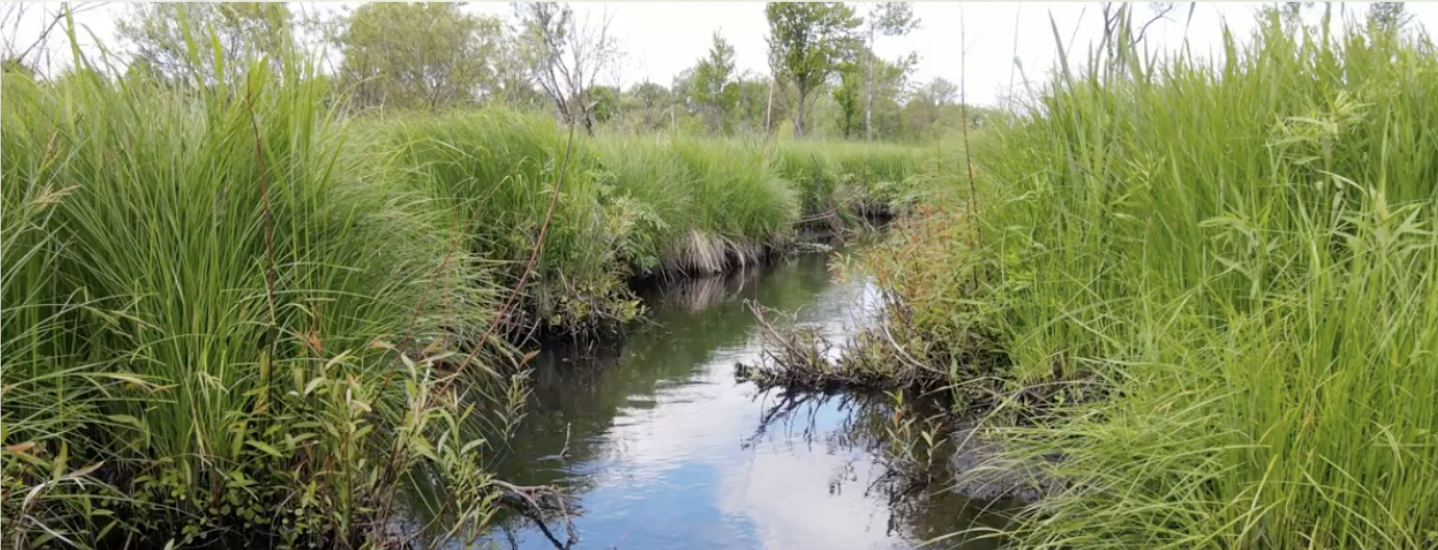
Pictured: McCoy Creek at Dayton Wet Prairie
Guided by the preserve management plan, first written in 2011 and updated in 2023, COL has steadily restored the prairie through invasive species control, habitat management, and long-term monitoring.
Tackling Invasives
Phragmites: Non-native stands are controlled with herbicide, cutting, and controlled burns to prevent small populations from spreading.
Shrubs: Buckthorn, multiflora rose, and encroaching native dogwoods and willows are cut back, while select shrubs remain along McCoy Creek to stabilize banks.
Thistle and Reed Canary Grass: Targeted spraying gives native grasses, like cordgrass, room to thrive.
Habitat Management
Controlled Burns: Controlled burns reduce woody growth, recycle nutrients, and encourage native plant growth.
Native Seed: Seed collected on-site and spread in restoration zones diversify and strengthen rare species, including native phragmites.
Wildlife
Butterflies: Annual butterfly surveys contribute to the Michigan Butterfly Network’s understanding of population trends.
Reptiles: Regular surveys have found multiple protected species, including at least one rare turtle and two rare snakes.
Birds: Breeding bird surveys with the Berrien Birding Club confirm Dayton Wet Prairie as a birding hotspot, with sightings from sandhill cranes, cedar waxwings, and warblers to bald and golden eagles. Species of special concern, such as the red-shouldered hawk and prothonotary warbler, have also been recorded.
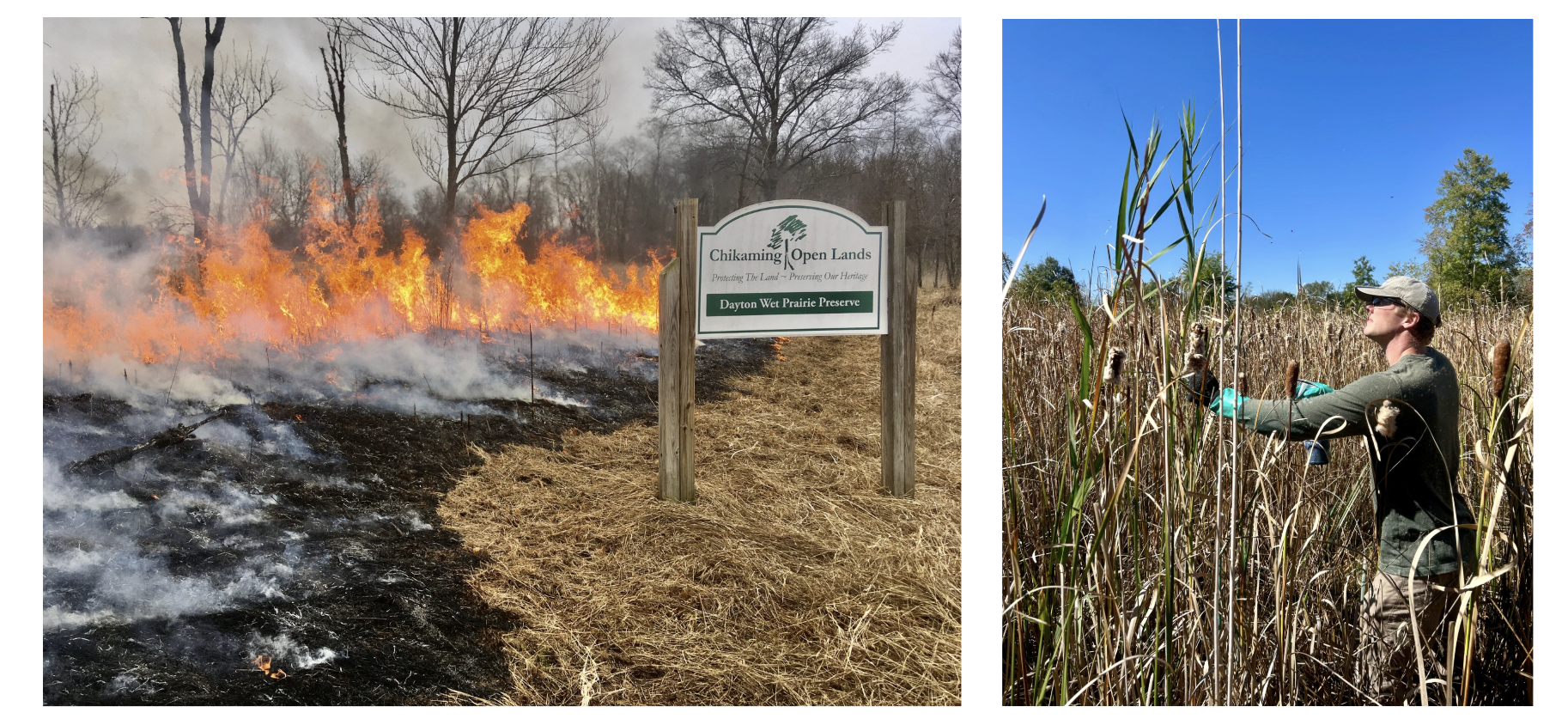
Pictured: controlled burn at Dayton Wet Prairie (left) and COL Conservation Specialist Alex Schrader hand-wicking invasive phragmites (right)
In addition to other management efforts, cleanups and new signage discourage dumping, while previously disturbed areas have been reseeded with native plants. Some results, such as cleared thickets, are immediate. Others are more subtle, like a cedar plank dam that slows water through an old ditch — restoring natural hydrology and helping the ecosystem flourish.
Most people will never visit Dayton Wet Prairie, but its protection benefits all. Its wetlands filter water into McCoy Creek and the St. Joseph River, shelter rare species, and safeguard a piece of Michigan’s pre-settlement landscape that cannot be replaced.
Stewardship here is muddy boots, patient monitoring, and deep respect for the land. This quiet but hopeful work allows rare plants to bloom and clean water to flow.
View the full newsletter here.
Some of the most important places we protect are the ones you may never see.

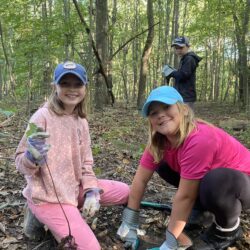
Mighty Acorns Returns for 10th Year with New Homeschool Program
Posted on October 14, 2025
COL celebrates a decade of helping students build knowledge, curiosity, and care for the natural world through hands-on learning.
Chikaming Open Lands (COL) is proud to announce the return of Mighty Acorns for its 10th year of connecting children to nature through hands-on, science-based learning. Since launching Michigan’s very first Mighty Acorns program in partnership with River Valley Schools in 2016, the program has grown to serve New Buffalo and Bridgman schools and now reaches approximately 350 students each year. This fall, COL is excited to expand access even further with the addition of a brand-new Homeschool Mighty Acorns program.
Developed by educators, naturalists, and scientists through the Field Museum in Chicago, Mighty Acorns integrates classroom curriculum with outdoor exploration on COL preserves. Aligned with federal education standards, the program gives students in grades 3–5 opportunities to:
- Explore nature through guided field experiences three times a year (fall, winter, spring)
- Reinforce classroom lessons with interactive games
- Participate in stewardship activities such as removing invasive species and building trails
- Develop a personal connection to the land through free exploration
A special legacy of the program remains visible today: the Mighty Oak Loop trail at Robinson Woods Preserve was named in honor of Mighty Acorns students who helped build it.
New This Year: Homeschool Mighty Acorns
For the first time, homeschool students will have the opportunity to participate. The pilot program launches this fall with the 3rd-grade curriculum, which focuses on birds. Families will attend one field day each season at a COL preserve. Specific locations and details will be provided to registered participants prior to the start of the program. Registration for Homeschool Mighty Acorns is now open.
Applying Knowledge Beyond the Preserve
In addition to the new homeschool offering, COL is also working with select 5th grade classes to expand the program’s reach beyond COL preserves. These students will apply their knowledge to broader, project-based learning opportunities, connecting what they’ve learned about stewardship to real-world applications in their own communities.
Planting Seeds for Future Growth
COL is currently seeking funding to offer Mighty Acorns to more school districts in Berrien County, creating more opportunities for children to experience hands-on environmental learning in our community.
“Every year, we see how Mighty Acorns sparks curiosity, builds confidence, and creates a sense of ownership among students,” said Grace Fredenburg, Education & Outreach Coordinator at COL. “Watching them grow in their understanding and love for nature, and then apply that knowledge in creative ways, is the most rewarding part of my job. We’re excited to continue building on this momentum and hope to bring the program to even more students in the future.”
To learn more, visit www.chikamingopenlands.org/mighty-acorns.
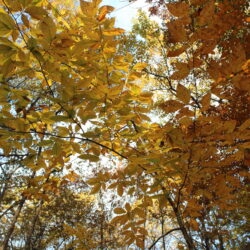
Southwest Michigan's Fall Colors
Posted on October 6, 2025
Fall has officially arrived in Southwest Michigan, bringing with it the beauty of changing leaves. Each year’s mix of sunlight, temperature, and rainfall creates a unique display that influences when colors peak, how vibrant they appear, and how long they last. It’s part of what makes Michigan’s fall season so intriguing and magical.
Why leaves change color:
As days get shorter and sunlight fades, trees stop making chlorophyll - the green pigment that fuels photosynthesis. When that green fades, the yellows and oranges that were hiding underneath start to show. Reds and purples appear when sugars get trapped in the leaves on sunny days and cool nights, creating those brilliant fall hues that we all love! The first trees to change over will be drought-stressed trees, and trees that are near roads or highways that have less soil availability.
How weather affects fall color:
The best fall color happens after a warm, sunny summer followed by cool (but not freezing) nights. How bright the leaves appear and how long the colors last depend on the temperature and moisture levels leading up to and during the time when trees begin losing chlorophyll. Too much rain or drought can dull the display or cause leaves to drop early. A warm, dry fall can also shorten the leaf-peeping season.
Michigan’s most colorful trees:
🍁 Sugar and red maples – fiery reds, oranges, and yellows
🌳 Aspen and birch – golden yellows across northern forests
🌿 Oaks and hickories – deep reds, rusts, and golds
🍂 Sassafras – rainbow tones from yellow to purple
🌲 Tamarack (larch) – a rare conifer that turns bright yellow before dropping its needles
In a typical year, the first trees to change colors are maples and sassafras, which give us fiery oranges, reds and yellows. The oaks and hickories typically change later in the season.
COL preserves offer some of the best vantage points to take in the colors of fall. Across the prairies, goldenrods fade from bright yellow to soft brown as they dry, while the tree lines beyond offer sweeping views, as the tops of maple trees are some of the first to change a brilliant red. Walking trails through the understory, you can look up through golden sassafras leaves and catch glimpses of sunlight filtering through the canopy. Take some time this fall to get outside and enjoy the beautiful transformation unfolding around you!
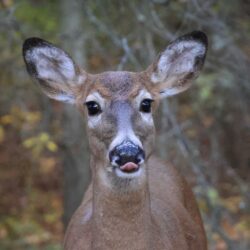
Epizootic Hemorrhagic Disease Returns
Posted on October 1, 2025
As summer transitions into fall, Michigan often sees the seasonal appearance of Epizootic Hemorrhagic Disease (EHD) in white-tailed deer. EHD is a viral disease spread by biting midges, tiny insects that thrive during late summer and early fall. Outbreaks typically subside after the first hard frost kills off the midge population.
Within the last month, the Michigan Department of Natural Resources confirmed the state’s first cases of EHD for 2025 in deer from several southern counties. While small, localized die-offs occur almost every year, these outbreaks can be concerning for hunters, landowners, and anyone who enjoys time outdoors.
What to know about EHD:
- The disease is not transmissible to humans or pets, nor can deer transmit the disease directly to one another. The virus must pass through the insect.
- Venison remains safe to eat if handled and cooked properly, as long as the meat is handled properly and cooked thoroughly. The virus does not infect humans and does not pose a food safety risk.
- Infected deer may appear weak, disoriented, or unafraid of humans, and are often found near water sources. Unfortunately, most deer that contract the virus die within days.
- EHD outbreaks are often localized, meaning one area may see significant losses while nearby areas are unaffected.
- Environmental conditions—such as hot, dry late summers that create more muddy water where midges breed—can increase the likelihood and severity of outbreaks.
Signs of EHD include:
- Weakness, reluctance to move
- Excessive salivation
- High fever
- Decreased fear of people
- Seeking out water to lie in (to cool down)
- Bleeding - including from mouth or in internal organs
- Rapid progression to death (often within 1–2 days after signs appear
Because there is no treatment for EHD, public awareness and monitoring are key. If you encounter a sick or dead deer that you suspect may be affected, please report it to the DNR and the landowner (such as Chikaming Open Lands) if you are at a preserve or park.
For more information about EHD in Michigan and the latest updates from the DNR, or to report a sick deer visit: michigan.gov/ehd
Pictured: Photo taken by Don Ashley of a healthy deer at Grand Beach Marsh Preserve


















